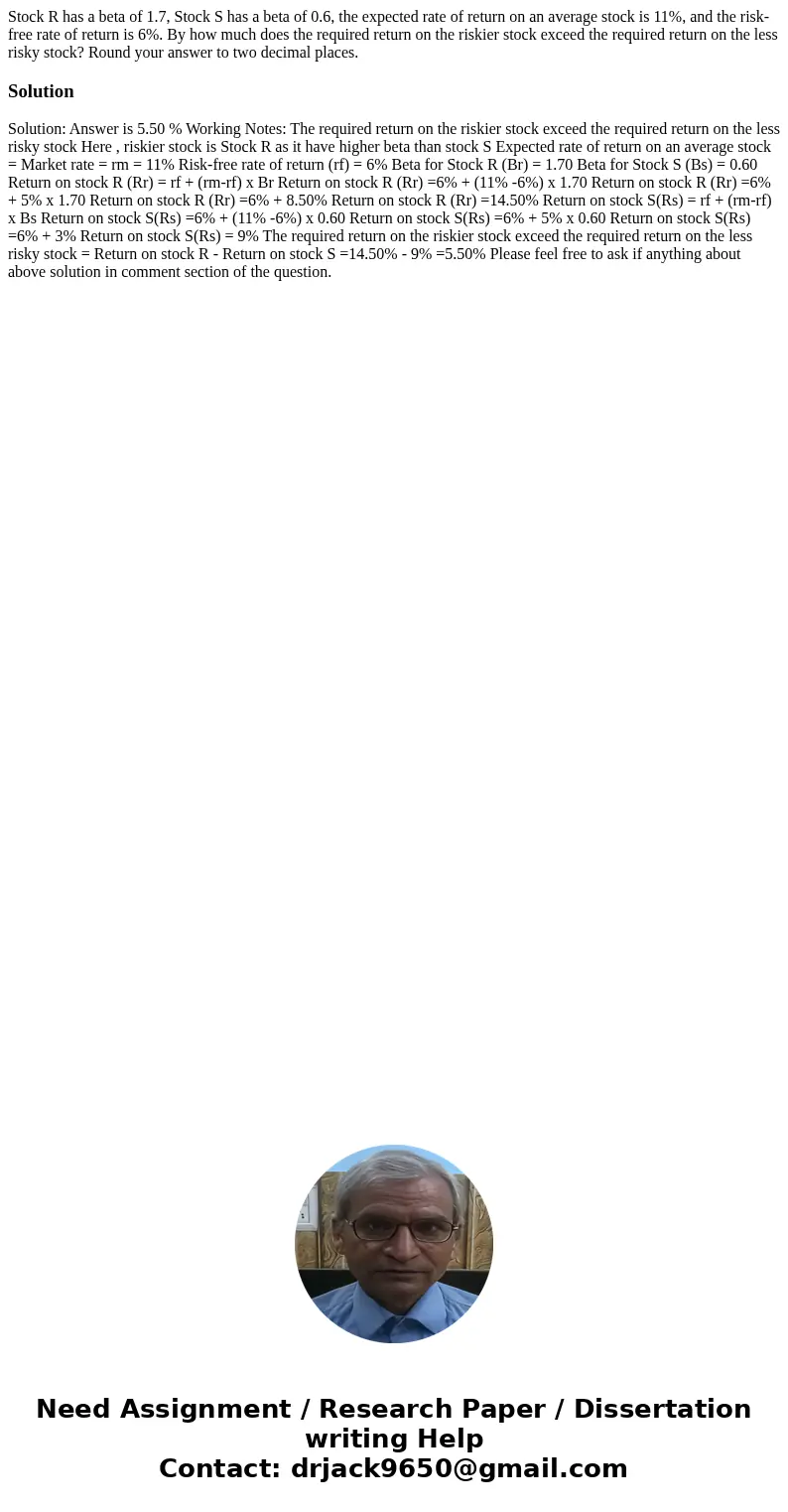Stock R has a beta of 17 Stock S has a beta of 06 the expect
Stock R has a beta of 1.7, Stock S has a beta of 0.6, the expected rate of return on an average stock is 11%, and the risk-free rate of return is 6%. By how much does the required return on the riskier stock exceed the required return on the less risky stock? Round your answer to two decimal places.
Solution
Solution: Answer is 5.50 % Working Notes: The required return on the riskier stock exceed the required return on the less risky stock Here , riskier stock is Stock R as it have higher beta than stock S Expected rate of return on an average stock = Market rate = rm = 11% Risk-free rate of return (rf) = 6% Beta for Stock R (Br) = 1.70 Beta for Stock S (Bs) = 0.60 Return on stock R (Rr) = rf + (rm-rf) x Br Return on stock R (Rr) =6% + (11% -6%) x 1.70 Return on stock R (Rr) =6% + 5% x 1.70 Return on stock R (Rr) =6% + 8.50% Return on stock R (Rr) =14.50% Return on stock S(Rs) = rf + (rm-rf) x Bs Return on stock S(Rs) =6% + (11% -6%) x 0.60 Return on stock S(Rs) =6% + 5% x 0.60 Return on stock S(Rs) =6% + 3% Return on stock S(Rs) = 9% The required return on the riskier stock exceed the required return on the less risky stock = Return on stock R - Return on stock S =14.50% - 9% =5.50% Please feel free to ask if anything about above solution in comment section of the question.
 Homework Sourse
Homework Sourse